
If you’re looking to make cannabis coconut oil, you’ve come to the right place! Here, we’ll show you how to make cannabis coconut oil through a tried and true recipe, as well as share more helpful information about infusing with coconut oil.
Canna-coconut oil is a great vegan or dairy free alternative to cannabutter, and is very popular because it can be used as an ingredient in just about EVERYTHING - including skincare products, hair care products, and of course, in cooking and baking. That’s because it’s full of healthy fats, which makes it an especially great source for infusion.
We’ve outlined our go-to methods for making weed coconut oil below, so next time you give it a try, the process is as smooth and effective as possible.
Ready to learn how to make cannabis coconut oil? Keep reading!
Cannabis Infused Coconut Oil Ingredients & Equipment
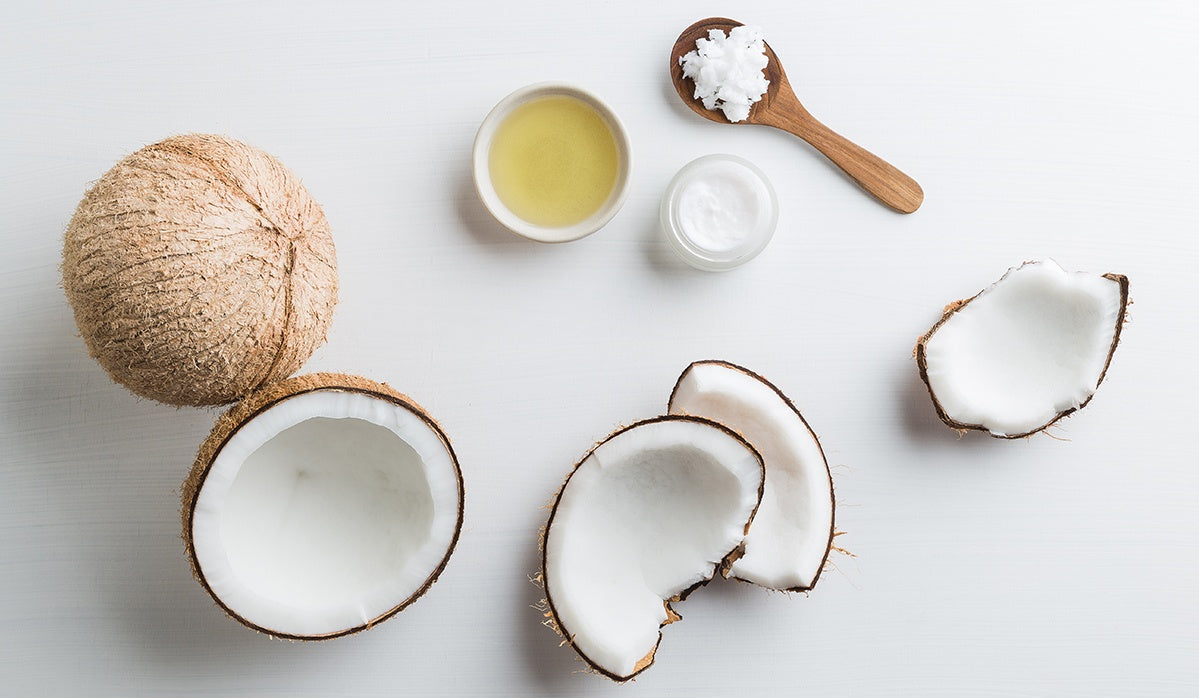
Equipment
- Decarboxylation method such as Ardent's FX, or Nova decarboxylator (if you want to get the absolute most out of your THC or CBD), or an oven, crockpot, toaster oven
- Ardent Infusion Press, Frainer, Cheesecloth, or other strainer
- Silicone spatula
- Rubberband
Cannabis Coconut Oil Ingredients List
- 1 oz coconut oil (choose between virgin unrefined, refined, or MCT oil)
- 1 gram of cannabis flower. Note: you can also use less or more depending on your tolerance. Feel free to instead use kief, concentrates, stems, or even sugar leaf.
Make it easy and grab Ardent's mess free coconut oil kit.
For reference, 1 gram of flower at 23% THCA will yield roughly 200 mgs of THC after precision decarboxylation. If you are using an oven, toaster oven or crockpot, you will be losing on average 30-40% of the final THC or CBD.
Go a bit easier when using kief or concentrates, as kief is about 40x stronger than flower, and concentrates generally lie between 60-80% potency per gram. You can typically check the potency on the lab test of the product you purchased at a dispensary.
Preparation Instructions for Canna Coconut Oil
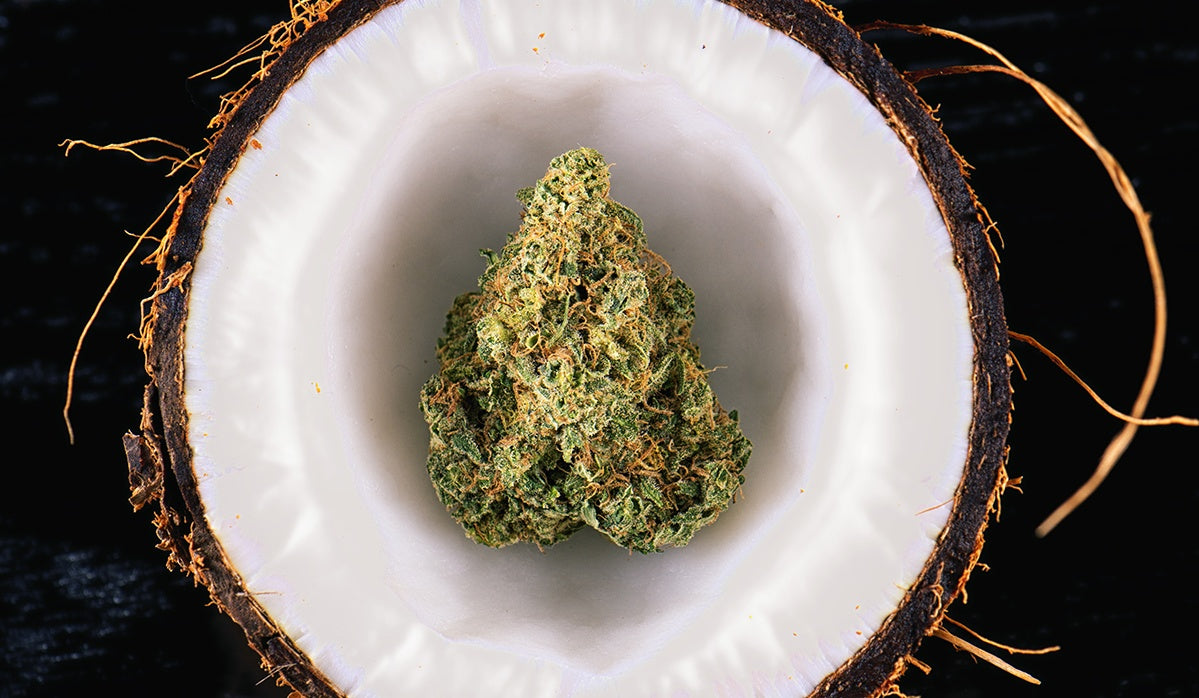
Choosing your Infusion Material
Your first step will include choosing which strain and starting material you’d like to utilize for your infusion. As mentioned, you can decarb flower, kief, concentrates, and even plant parts like sugar leaf and leftover stems to capture and activate any remaining cannabinoids that would’ve otherwise been left behind. The type of material you choose will help determine how potent your infusion will be.
Dosing
When making cannabis-infused coconut oil, you want to be sure you’re aware of how strong it is, and how much of it you’re using in each recipe. One way to be sure of your dose is through making a small batch, using only what’s needed for a single recipe, weighing your material to ensure you’re using the proper amount. It is easier, however, to make larger batches and use it little by little in a few different recipes.
We have a full detailed post to teach you how to accurately dose your material and infusions but in short, here is a simple formula to help figure out how strong your infusion will be.
First, look at your cannabis lab test to see the percentage of THCA in your material. Once you have that, we can do some simple math to calculate the milligrams (mg) of THC per gram.
- When decarboxylating, you are removing the acid molecule from the THCA to convert it into THC (or in the case of CBD, decarboxylation turns CBDA to CBD - also by removing the acid molecule.)
- That acid molecule weighs 13% of the total, so to find the total potential THC from THCA, or of CBD from CBDA you multiply the THCA or CBDA x ,87% to get the maximum amount available in the plant. In this example 23% THCA x .87 = 20% potential THC. So with precision decarboxylation in FX or Nova decarboxylator, you can get 20% THC in the final material. Note that if you use a less precise method like an oven, toaster oven or crockpot to decarboxylate, you will get between 30-40% less than the total potential THC or CBD.
- Once you know the %, just move the decimal one place to the right to see how many mg of THC per gram.
- Here, the 20%, move the demimal one over, 20.0 = 200 mgs
- Your plant material now contains about 200 mg activated THC after decarb in FX, or Nova decarboxylator.
Choosing Your Coconut Oil

Next, you want to choose which type of coconut oil is best for you!
Virgin Coconut Oil
Virgin, unrefined coconut oil, which can be found in most grocery stores, contains natural oil created by cold pressing coconut meat. It often tastes strongly of coconut. It has a solid consistency in cooler temperatures and turns to liquid in warm environments or when heated.
Refined Coconut Oil
Refined coconut oil is a more processed version of the above coconut oil. It often tastes a bit less like coconut than it’s virgin, unrefined counterpart. It also fluctuates between solid and liquid depending on the temperature.
MCT Oil
MCT oil is a clarified version of coconut oil. MCT stands for medium-chain triglycerides, which are fats pulled from coconuts. MCT oil has no discernable taste and comes only in liquid form.
Cannabis Coconut Oil Recipe Directions
When learning how to make cannabis coconut oil, you must keep in mind that decarboxylation is the most important step to getting the most out of your infusion.
Decarboxylation is essential for activating your material and prepping it for infusion, which in turn, helps with bioavailability. Without decarboxylation, your THC and CBD will still be in the acid form, and you won't get the effects that you are expecting from THC and CBD.
Step 1: Decarboxylation
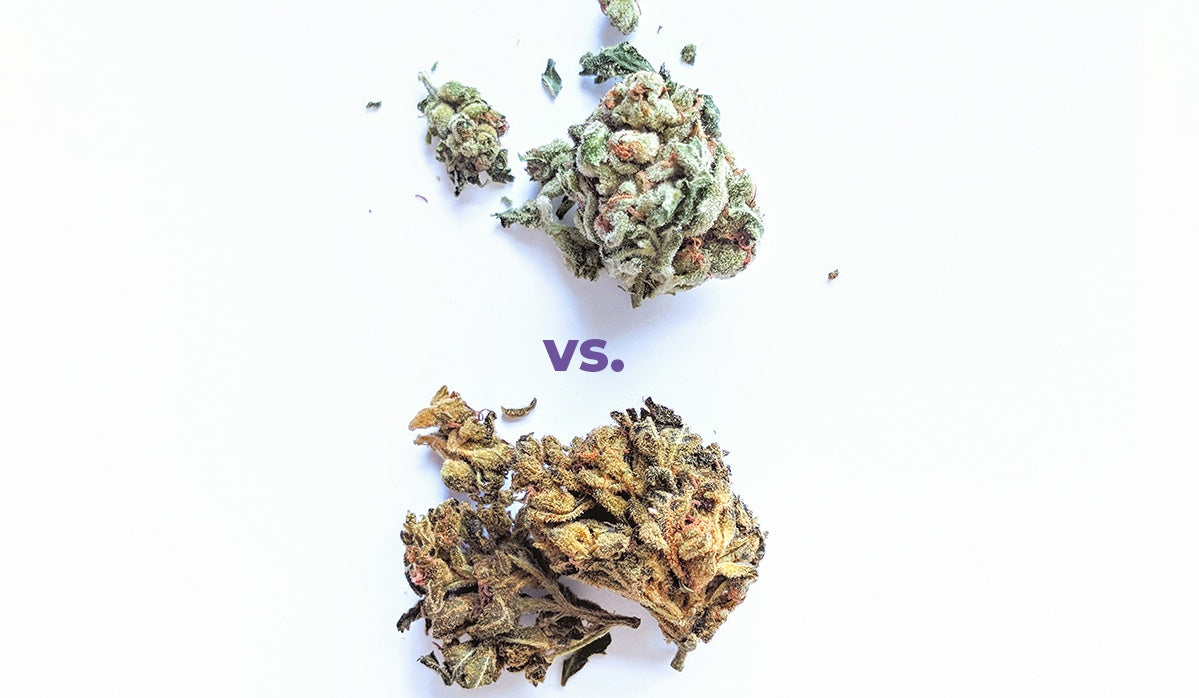
A great way to prepare for making a batch of weed coconut oil (at any time) is by decarboxylating your material in advance, then putting it in an air-tight container and storing it in a dark, temperature controlled place, such as a drawer, cupboard, or other safe place away from pets, children and the like. Decarbed flower stored properly can last longer than you might expect.
Oven Decarb
To decarb in the oven, you’ll need a cookie sheet and some parchment paper.
- Preheat your oven to 240 -260 degrees.
- Grind your 1 gram of cannabis up and spread it evenly across the parchment paper. (You can use more cannabis or less here depending on your tolerance and what your final recipe calls for.)
- Place your cookie sheet on the center rack and allow your bud to activate for 40 - 60 minutes.
Our test results show that oven decarb loses about 30-40% of cannabinoids - temperature fluctuations and harsh heating elements lead to an imprecise process.
The process is also one of the least discreet, and you should be mindful of your neighbors, any children, and other folks with sensitivities who might be sharing your space.
Toaster Oven Decarb
Prepare your cannabis in the same way as outlined above for the oven.
- Place a sheet of parchment paper on a cookie sheet.
- Grind your 1 gram of cannabis up and spread it evenly across the parchment paper.
- “Toast” your herb at 220 -240 degrees for 60 minutes.
Our test results show that toaster oven decarb loses about 30-40% of cannabinoids - temperature fluctuations and harsh heating elements lead to an imprecise process.
Another less than discreet method, the toaster oven provides a lot of cannabinoid loss, and is not ideal for decarboxylation, but will work in a pinch for a bit of activation.
Ardent Technology
The Ardent Nova and FX are precision decarboxylators perfect for folks decarbing for personal use such as making cannabis coconut oil. With patented heating technology that wraps around the entire decarboxylation cavity coupled with dual precision sensors and a precision decarb algorithm, there is no minumum amount you can decarb, and no worries about losing precious cannabinoids.
- For the Nova: Place your 1 gram of cannabis flower inside the Nova and press the power button. (Decarb time including heat up and cool down will be approx 1 hour 45 min.)
- For the FX: place your 1 gram of flower inside, choose the A1 setting for THC, and A2 setting for CBD, then press the power button to start. (Decarb time will be just over an hour)
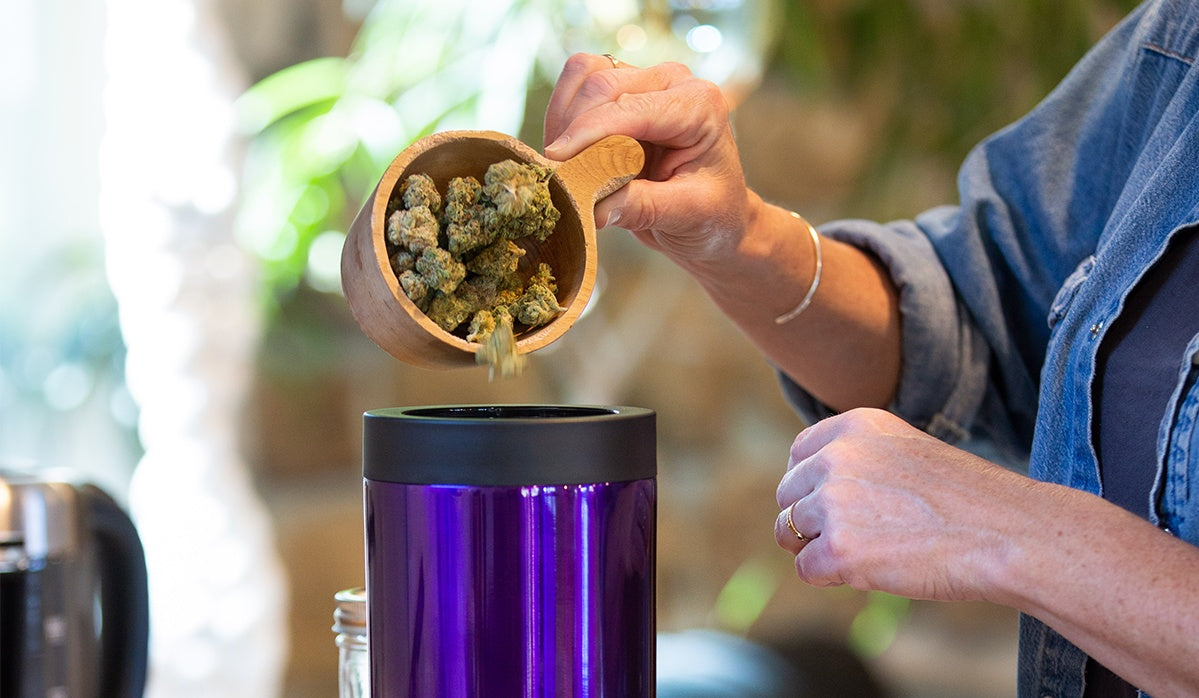
Both devices allow you to achieve over 97% activation in each and every cycle PLUS give you infusion capabilities directly in-unit.
Ardent technology is both the easiest and the most effective way to make a cannabis coconut oil recipe, whether you’re at home or on-the-go.
Now that you have your material activated, we can move on to the next step!
Step 2: Infusion
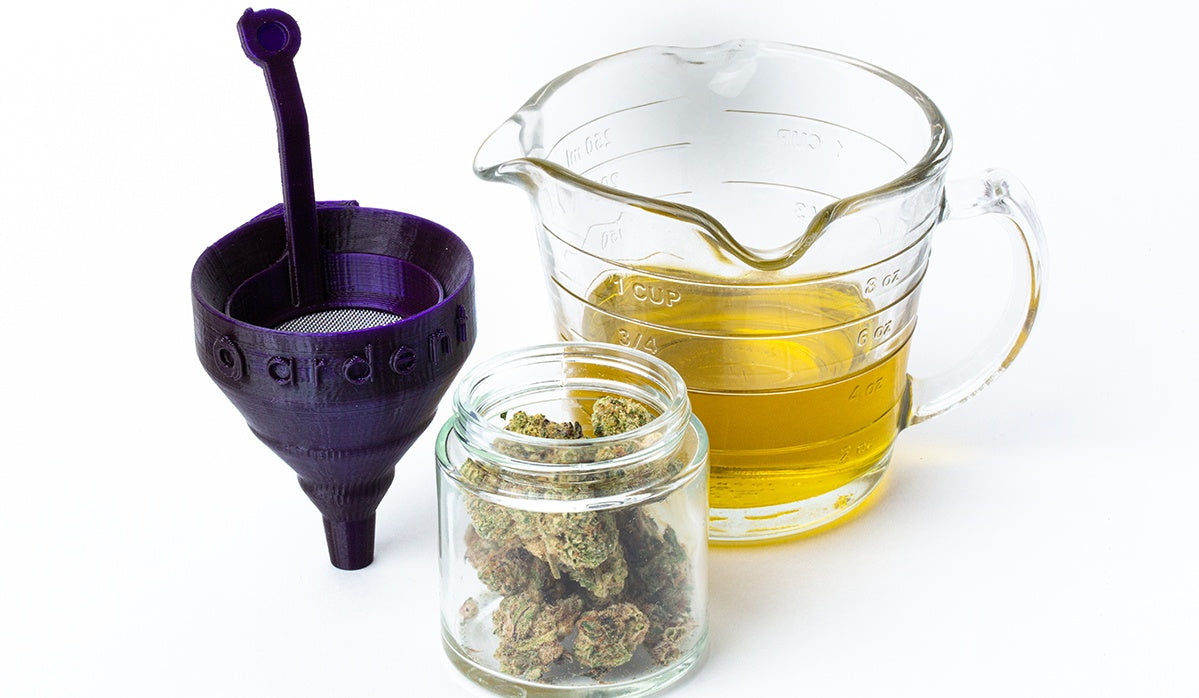
Now, it’s time for infusion! Throughout the infusion process, you want to be sure that the temperature of the mixture doesn’t climb above 300 degrees. The simplest way to infuse is to simply pour your oil over the decarbed material inside FX or Nova. You can then run a second cycle (same button as the decarb function on the Nova - for FX you can infuse on the A1 setting or the Infuse setting depending on your preference for a higher temp or lower temp infusion).
If you don't have an FX or Nova decarboxylator, you can make due with a manual or digital cooking thermometer along with your stovetop.
The amount of coconut oil you’re infusing matters a LOT. The less oil you use, the more potent your infusion will be. Just the same way that the more plant material you use, the stronger it will be. If you are using one gram of flower, we recommend starting off with one ounce of oil. If you are using one cup of oil, 7-8 grams of decarbed flower is a good place to start. If your end infusion is too strong, you can mix in non-infused oil to make it less potent. If your infusion not strong enough, you can infuse the oil again with fresh decarbed material with a process called infusion boosting.
Crockpot or Pressure Cooker Infused Coconut Oil
To make cannabis infused coconut oil inside a crockpot or pressure cooker, you’ll need to tie up your decarbed herb into a cheesecloth using a rubber band. Then, place your decarbed bud inside the crockpot and pour the coconut oil of choice over top.
Allow it to infuse slowly on low heat, stirring with your rubber spatula every half hour or so.
Because there isn’t a setting for infusion on the crockpot or pressure cooker, you’ll unfortunately have to keep coming back to stir and watch your infusion.
When it’s done, ring out your cheesecloth and either save your raffinate for later, or toss the cheesecloth out.
Sous Vide Method
To make canna coconut oil using the sous vide method, you’ll need a few additional items. Some folks choose to decarb using the water displacement method; however, that results in some less than ideal cannabinoid waste, although it is discreet. If you’re using the sous vide cannabis coconut oil method, you’ll need a bucket or large pot that you can use as a water bath.
You’ll also need a cannabis coconut oil mason jar, which will contain both your decarbed herb and oil that will be slowly infused with the heat from your water bath, along with a sous vide.
Ardent Nova or FX
Our favorite cannabis coconut oil recipe uses Ardent technology, of course. In the Nova, combine your decarbed plant material with coconut oil and run it for another cycle. Strain and enjoy. Use the Coconut Oil Infusion Kit to make it even easier! (see video below)
To make cannabis-infused coconut oil using the FX, add your 1 gram of decarbed plant material and 1 oz of coconut oil inside the device. Adjust to the infuse setting and press the power button to start. After the infusion cycle has run, strain using the Infusion Press or Ardent's Frainer for no-mess straining.
No matter which way you’ve chosen, you now have your cannabis infused coconut oil!
What to do with your Cannabis Infused Coconut Oil
Now that you’ve made your cannabis infused coconut oil, there are plenty of options for what you can do with it at home!
- Using infused coconut oil, almond oil, shea butter, mango butter, beeswax, and essential oils, you can make infused hand salves or whipped body creams.
- Toss a bit of infused coconut oil into your morning smoothie so the thickness allows it to fully blend.
- Use weed coconut oil in your coffee to make a filling bulletproof brew.
- Apply your infused coconut oil directly to your scalp, cuticles, hands, and body as an instant moisturizer.
- Make vegan cookies using cannabis coconut oil, peanut butter, and plant-based milk.
- Ultimately, any recipe requiring coconut oil can be substituted with your newly infused oil!

Weed coconut oil nutrition information
Weed coconut oil is a plant-based solution to bioavailable infusions. This dairy-free product has about 121 calories per tablespoon, with about 13.5 g of fat per serving. Consuming cannabis coconut oil may also help you feel full longer because it’s jam-packed with natural fats.
Now that you know how to make cannabis-infused coconut oil, what’re you making first? Find plenty of uses for your infused oil on our blog, including cannabis capsules, smoothies, and even cannabis pain salve. Visual learner? No problem. Follow along with our cannabis coconut oil infusion process by watching our video here.
